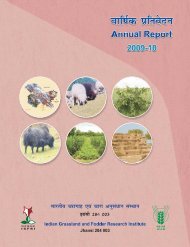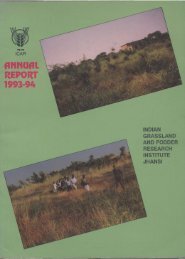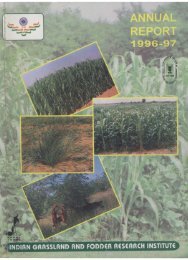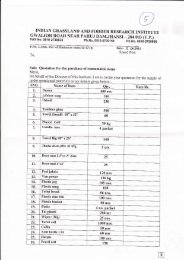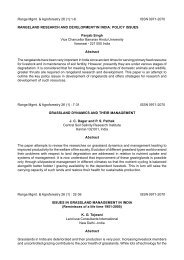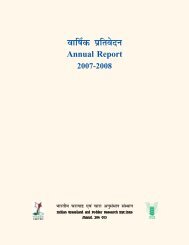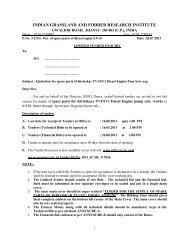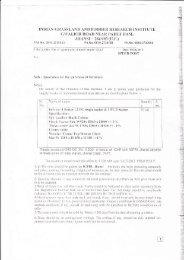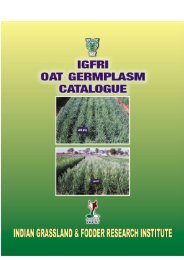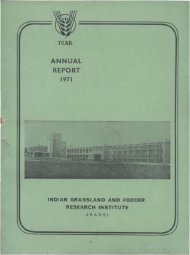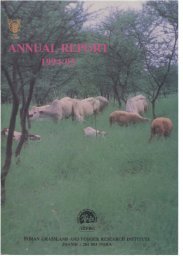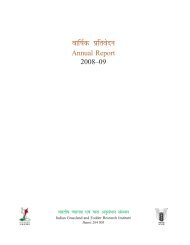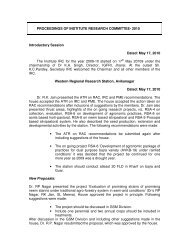Forage Production Technology for Arable Lands - Indian Grassland ...
Forage Production Technology for Arable Lands - Indian Grassland ...
Forage Production Technology for Arable Lands - Indian Grassland ...
Create successful ePaper yourself
Turn your PDF publications into a flip-book with our unique Google optimized e-Paper software.
BL-1, 2 androws apart inone deepKohinoor2:2 row ratiosummerploughing inApril as wellastwo harrowingare done ineach seasonGram +Gram- 30 kgGrown rain-BasalAt 15 – 20 %linseed (G)and cowpea- 20fedapplicationmoisture inkg sown in 30of 20+45 kgseedcm rows apartNP/hain 2:2 row ratioPearl millet + cowpea – Batra (Vicia sativa)PearlJune - July Pearl millet- 5Grown rain-BasalHarvesting atmillet: Rajkg and cowpea-fed, <strong>for</strong>application55-60 DASbajra chari-20 kgmoistureof 40+45 kg2, AVKB -sown in 30 cmmanagementNP/ha19 +rows apart inone deepCowpea:2:2 row ratiosummerBL-1, 2 andploughing isKohinoordone in Aprilas well astwo harrowingare done ineach seasonOutput and economics: In sorghum + cowpea - gram + linseed, during Kharif 28.437 tgreen fodder from sorghum and cowpea is obtained. Besides this 2.27 q gram and 2.12 qlinseed grains are produced from the system. In case of pearl millet + cowpea - batra,44.94 t green and 8.50 t dry matter/ ha may be obtained. The B: C ratio is always morethan 2.0.Specific benefits: The system provides quality fodder as well as pulse production fromthe same field. This also ensures better <strong>for</strong>age production under limited resourcecondition.24 <strong>Forage</strong> <strong>Production</strong> <strong>Technology</strong> <strong>for</strong> <strong>Arable</strong> <strong>Lands</strong>



